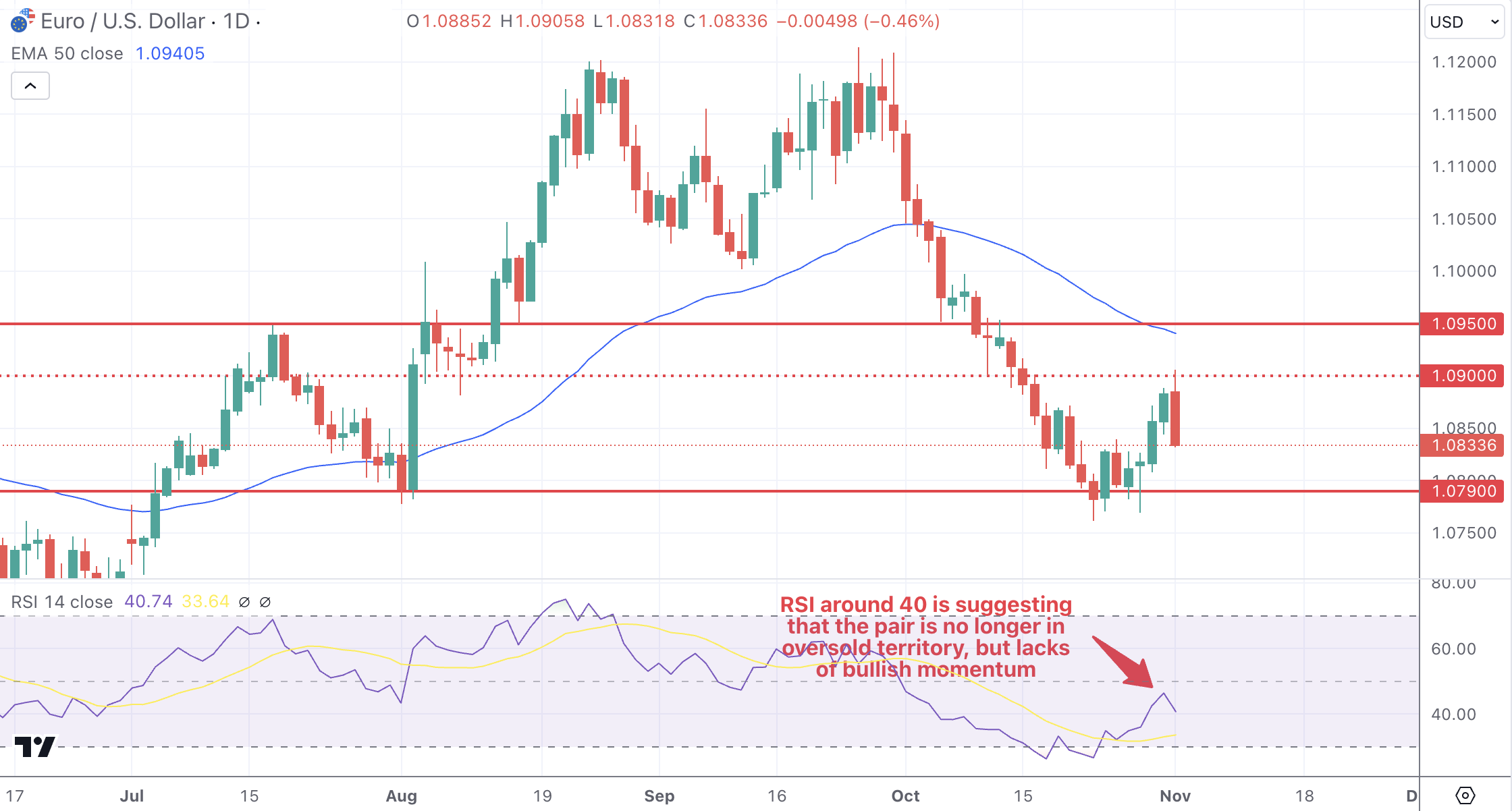Key Takeaways
- EUR/USD is showing signs of recovery amid dollar weakness following a disappointing U.S. jobs report.
- Technical resistance at 1.0900 and 1.0950 will be crucial to watch, as a break above these levels could indicate a potential shift in momentum.
- S. economic data and Fed comments will play a key role in determining the pair’s direction, especially as market expectations for a dovish Fed policy grow.
- The U.S. election adds another layer of uncertainty, which could drive further volatility in EUR/USD in the week ahead.
Market Dynamics and Recent Performance
EUR/USD has been gaining traction, bolstered by weaker U.S. economic data that has tempered the dollar’s strength. The recent U.S. Non-Farm Payroll report showed a disappointing addition of only 12,000 jobs, significantly below expectations. This report has led to speculation that the Federal Reserve may consider halting or even cutting rates sooner than anticipated, which has in turn weighed on the dollar. In contrast, the Euro has been benefiting from this dollar weakness, though it remains cautious due to its own economic challenges.
The drop in U.S. job growth has heightened market expectations for a dovish shift in the Fed’s approach, pushing investors to seek alternative assets. This dollar softness has provided a lift to EUR/USD, which is now trading above its recent lows. The upcoming U.S. elections and the Federal Reserve meeting further add to the uncertainty, making EUR/USD a focus for volatility.
Technical and Fundamental Influences
From a technical perspective, EUR/USD is navigating near a key support level around 1.0800, having bounced from this area following the weak U.S. employment data. Immediate resistance lies at 1.0900, with more substantial resistance at 1.0950, the latter being reinforced by the 50-day EMA. The Relative Strength Index (RSI) for EUR/USD hovers around 35-40, suggesting that the pair is no longer in oversold territory but lacks significant bullish momentum. A break above 1.0950 could indicate further upward potential, while failure to sustain above 1.0800 could expose the pair to renewed bearish pressure.
Fundamentally, while the Eurozone faces economic headwinds, including stagnant growth in key economies like Germany, the recent weakness in the dollar is providing EUR/USD with some breathing room. The Federal Reserve’s potential policy shift, combined with political uncertainty surrounding the U.S. elections, is creating a more favorable backdrop for the Euro in the near term. However, the European Central Bank’s cautious stance amid sluggish inflation and growth still limits the Euro’s upside.
Looking Forward
In the coming week, traders will focus on U.S. Factory Orders and consumer sentiment data, which could further impact the dollar. Additionally, any comments from Federal Reserve officials regarding their economic outlook will be closely monitored, especially as the recent weak jobs report has raised questions about the Fed’s rate path. For the Euro, investors will be watching for any signs of economic stabilization in the Eurozone, as well as inflation data that could influence ECB policy expectations.


